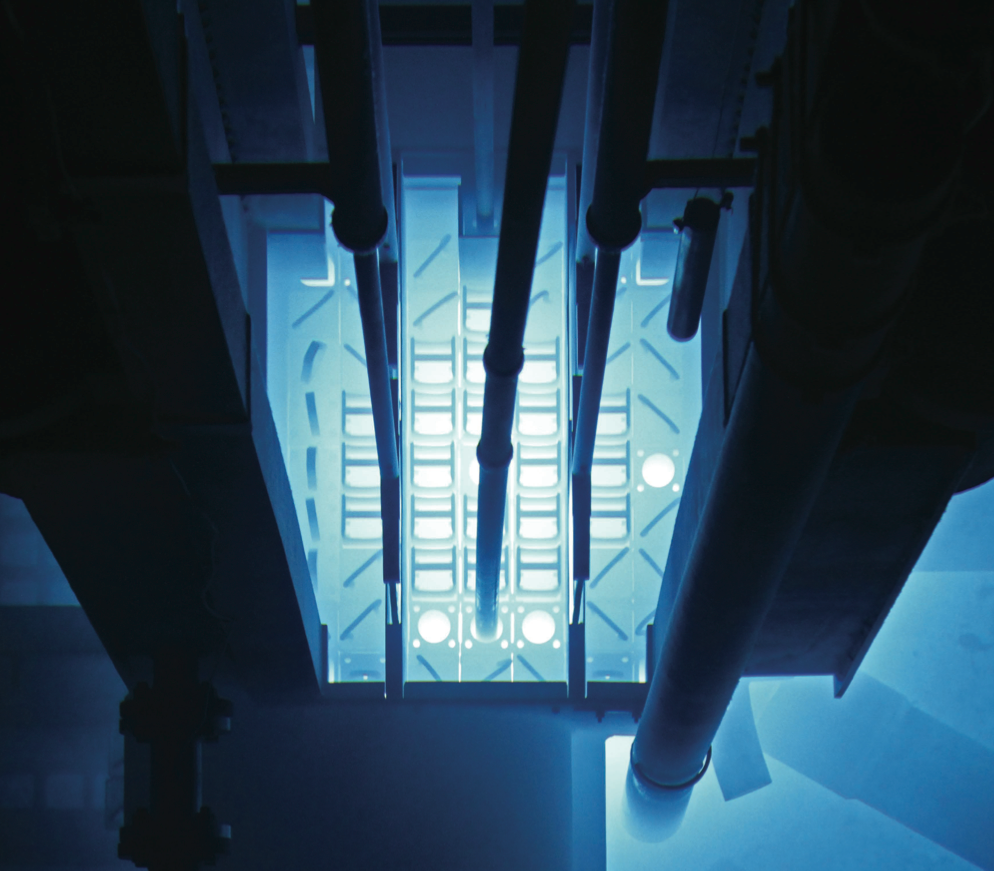2. How do neutrons interact with matter?¶
We have established that the fundamental problem in reactor physics is to determine the neutron distrbution in a reactor. Before we can address this problem, however, we must understand fundamentally how neutrons interact with matter. Thus our second problem is “simply”:
How do neutrons interact with matter?
2.1. Background¶
2.2. Comrehension Assessment¶
- In the formation of a compound nucleus, why is the available kinetic energy equal to \(e_\text{exc}\), the energy in the CM system, rather than the total kinetic energy in the LAB system?
- Show that conservation of linear momentum in the LAB system implies conservation of linear momentum in the CM system.
- Show that conservation of energy in the LAB system implies conservation of energy in the CM system.
2.3. In-Class Problems¶
- What does it mean for a scattering reaction to be isotropic in CM? Derive a probability density function describing the probability that a neutron will elastically scatter with an outgoing CM angle \(\varphi\) assuming that the target nucleus is initially at rest.
- Derive the probability density function \(P(E \rightarrow E')\) that a neutron with initial LAB energy \(E\) will elastically scatter to a new energy \(E'\). Assume that the target nucleus is initially at rest and that scattering is isotropic in CM.
We will solve the next problem in terms of lethargy, which is a sister variable to energy. Given some arbitrary energy \(E_0\), define the lethargy corresponding to energy \(E\) as
\[u = \ln \frac{E_0}{E} \;\;.\]
Thus as energy decreases, lethargy increases and vice versa.
- Consider a neutron with an initial energy \(E = 2\) MeV in the LAB that elastically and isotropically (in CM) scatters off a nucleus that is initially at rest.
- Express the average lethargy gain \(\left< u - u' \right>\) of the neutron in the LAB in terms of the mass ration \(A\) of the nucleus.
- Find the average number of scattering collisions \(\left< n \right>\) to slow down a neutron from energy \(E_0\) to \(E = 0.025\) eV in the LAB.
- Compute \(\left< u - u' \right>\) and \(\left< n \right>\) for the following nuclei: \({\vphantom{H}}^1H\), \({\vphantom{C}}^{12}C\), and \({\vphantom{U}}^{238}U\).
- Assume an elastic and isotropic collision in the CM system between a neutron and a nucleus with a nuclear mass ration of \(A\). Neglect the initial velocity of the target nucleus.
- Obtain the probability density \(f(\mu)\) where \(f(\mu)d\mu\) is the probability for the deviation cosine (\(\cos\theta\)) to have a value equal to \(\mu\) (within an interval \(d\mu\)) in the LAB system. (Hint: first obtain the relation between \(\mu=\cos\theta\) and \(\cos\phi\) by using the Law of Sines in Figure 3 of the notes.
- Plot \(f(\mu)\) for several values of \(A\) and \(\phi\).
